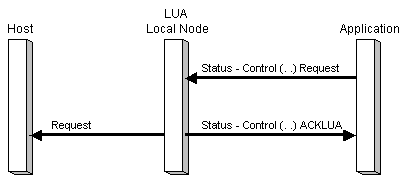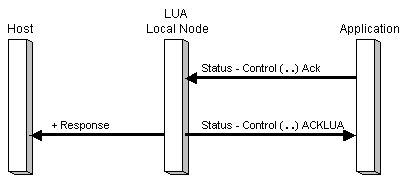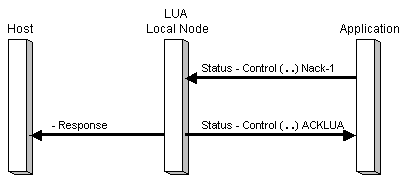
When an LUA application sends a Status-Control message inbound to the local node, the LUA verb used to send the message cannot complete until the local node acknowledges the message. Because of this, the local node will always respond to the LUA application after it has completed its send checking of the inbound message. If the inbound message passes the local node's send checks, and the corresponding SNA message will be sent to the host, the local node sends a Status-Control(...) ACKLUA message to the application to indicate this. Note that the ACKLUA message does not imply that the SNA message was successfully sent to the host, or that the host received it.
The format of the Status-Control(...) ACKLUA message is explained in Status-Control(...) ACKLUA. Note that the use of the message key field in Status-Control(...) ACKLUA is different from other Status-Control messages; it contains the sequence number from the TH of the Status-Control message sent by the LUA application, not the message key.
If the inbound message fails the local node's send checking, a Status-Control(...) Negative Acknowledge-2 message will be returned as for non-LUA applications. (This is then reported to the LUA application by a non-OK return code to the LUA verb that sent the message.)
The following three figures illustrate the ACKLUA acknowledgment protocol for different messages that the application can send.
In the first illustration, the application sends a Status-Control(...) Request message that passes the local node's send checks.

In the following illustration, the application sends a Status-Control(...) Acknowledge message that passes the local node's send checks.

In the following illustration, the application sends a Status-Control(...) Negative-Acknowledge-1 message that passes the local node's send checks.
